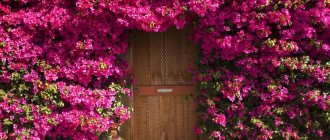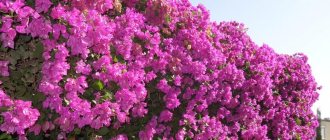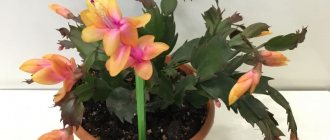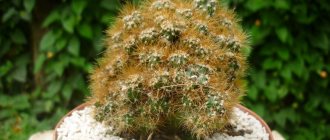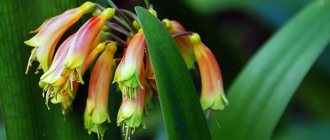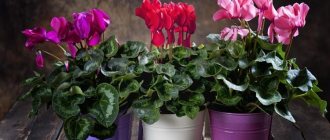/Accessories and decor/Gardening/
When an anthurium takes up residence in the house, all attention involuntarily turns to it: juicy dark green leaves and a bright cover of inflorescences are both a spectacular and very neat appearance of a houseplant. The non-tanical names “male happiness” and “red tongue” also came into use.
The whimsical leaf-shaped blanket looks shiny and slightly fake, like it's made of plastic!
By the way, the colored blanket, which many people mistake for the flower itself, can be not only red, but also orange, pink, white and light green.
The best qualities of anthurium:
- Caring for anthurium at home is not difficult even for beginners and lazy gardeners;
- The plant is quite suitable for apartments with low light levels (which is especially pleasing for Russians in autumn and winter);
- The plant can delight you with flowering for a very long time: almost all year round;
- This is a great option for cutting: the flowers will last in water for a surprisingly long time (about a month).
If you accidentally find out about a birthday or a date, the anthurium can donate its beautiful scarlet flowers so that its owner does not go empty-handed. Interestingly, Russia initially became acquainted with anthurium in bouquets, and then the plant took root as a potted plant.
Important: anthurium leaves may contain calcium crystals that cause irritation on delicate (for example, children's) skin. Also watch your curious cats who like to chew indoor flowers in their spare time: anthurium is an unsafe snack for them.
It is believed that the plant brings success and reinforces the perseverance and confidence of men, and if it is put in a combo with spathiphyllum (the so-called “women's happiness”), their company will give mutual understanding in a couple and protect the family.
Lighting (where is it better to place the pot at home)
Anthurium readily blooms in diffused but bright light. On the north window, it actively stretches out in search of light and does not look so impressive, which is why some apartments use additional lighting. Diffused partial shade reminds the plant of its native tropics, so western and eastern windows are ideal, and in the south in the summer you need to make sure that the anthurium does not get burned: shade it or place it in a corner.
Biological dictionary
Tradescantia (60 photos): types and features of care
The Araceae family includes from 500 to 1500 species of artificially bred and natural anthuriums - this is the largest genus in this family.
Like many aroids, cavalli is an epiphyte, that is, it lives on other plants, but, unlike parasites, it does not cause any harm to its “host”, using it only to obtain light. This came from the ancestors of the flower, which grew in the southern regions of North America and almost throughout the entire Latin jungle.
A bushy plant, cavalli and house anthuriums prefer a warm tropical climate, and with proper care, flowers appear quite often - up to 10-11 inflorescences in summer, and about 3-4 in winter.
Temperature
The indoor flower is quite friendly to room temperature or a couple of degrees lower.
- Summer option - 20-25 degrees.
- Winter - 16-18.
Keep in mind that close proximity of the plant to heating devices is undesirable, and on hot summer days the pot should be removed from the window. On a too cold windowsill, you can turn on a lamp for warmth, and also carefully monitor drafts: anthurium, like many other plants, does not tolerate them.
See also:
- How to care for Schefflera at home
- Caring for indoor hydrangea at home
- How to care for dracaena at home
- Caring for Zamioculcas (dollar tree) at home
- How to care for begonia at home
- How to care for a money tree (crassula)
- How to care for myrtle at home
- How to care for hibiscus (indoor Chinese rose) at home
- How to care for Kalanchoe at home
- Tree in the room: how to care for Ficus Benjamin at home
- How to care for geraniums at home - a guide for beginners
- How to care for orchids - 7 steps for a beginner
- How to care for violets at home
Do caladiums bloom?
With such gorgeous foliage, you might think that caladium flowers might be insignificant, similar to other showy shade garden foliage plants such as coral bells or hostas. Actually this is not true.
Caladium plants that do flower grow a thick spike called a spathe.
Caladium flowers are more common on plants with larger tubers, so fertilizer is a must. Larger tubers have more energy to produce flowers.
Watering
Although anthurium sometimes misses the tropics, it does not need any tropical rains when watering. Optimal watering schedule:
- In summer - 2-3 times a week.
- In winter - once a week.
It is convenient to focus on the condition of the top layer of soil and water only after it dries out. Water should not stagnate to prevent root rot, so pour excess water from a tray or saucer.
Important: ice-cold tap water will not work. We leave the water to stand for 24 hours or collect rainwater. Pay attention to the water in your area: too much lime can cause leaves to turn yellow. It is better to always keep clean, settled water near the flower.
Humidity
But moist air is a necessity for our beautiful plant. Anthurium is happy with a daily shower from a spray bottle, or even several times a day. Important: reject the cob with the cover when spraying, since moisture is only beneficial to the leaves of the plant.
Remember to regularly wipe the leaves with a damp cloth or even take a cool shower in the bathroom, covering the soil and cobs.
If the air in your apartment is very dry, you can resort to an additional trick: line the pot in some container with expanded clay and moisten it daily. The stones will release moisture as an autonomous air humidifier.
Photo of anthurium in the interior
Botanical description
Anthurium (lat. Anthurium) is a genus of predominantly epiphytic plants from the family of Aroid plants. There are also herbaceous plants, lianas and semi-epiphytes - depending on the species. In nature, anthuriums mainly grow on the North and South American continents in tropical and subtropical zones. Anthurium (Greek “anthos” - flower and “oura” - tail) received its name because of the structure of the flower, which is expressed as a spadix with a leaf-spread. Flowers come in blue, white, red and other colors. Anthurium leaves are leathery, can be whole or dissected, small or large, plain or with a pattern - all this depends on the type and variety of anthurium. Anthurium is one of the most popular members of the family. They grow not only indoor anthurium, but also garden anthurium, and also especially for cutting. Over 100 hybrids are grown in culture, which are planted in gardens, apartments or used in making bouquets. Homemade anthurium is grown both for its beautiful leaves and flowers.
Top dressing
All indoor plants of this type adhere to the usual seasonal diet: they need feeding in the spring and summer. Two or three times a month will be enough.
- Fertilizers for aroid plants and orchids are suitable for anthuriums.
Carefully study the instructions for applying fertilizers: overfeeding a flower is just as bad as neglecting fertilizers.
- Do not apply fertilizer on a hot summer day: it is better to do it in the morning so that the components do not burn the plant under the intense sun.
Similar flowers
The most similar in appearance and signs of care include the following plant names:
- Scherzer.
- Andre.
- Hooker.
- Rothschild.
- Lindell.
- Aunthurium.
It’s not for nothing that Dakota occupies a leading place on the list of favorite indoor plants. Its flowering is long and these bright colors will always delight you. And although this culture requires more attention , it easily compensates for it with its beautiful view.
Transfer
Anthurium needs to be transplanted if:
- It arrived from the store in a shipping pot (the soil in such a substrate is dry, and the pot has large drainage holes, from where the water drains down and stagnates in the pan).
- If the plant has already lived with you for a year or two (this is the period during which the anthurium begins to need fresh soil).
Replanting stimulates more abundant flowering and plant growth.
Choosing a pot
Anthurium loves narrow and small pots. Transplanting into a very spacious home will only affect the appearance of “babies” in large numbers, but not the decorative appearance of the anthurium itself.
Therefore, if the bush has already noticeably outgrown its pot, buy a new pot with a diameter of only 1-2 centimeters larger.
Soil selection
The easiest way to purchase soil for replanting is in the store among ready-made soil mixtures for plants of the aroid and orchid families. This is a light, airy soil that tropical anthurium will like.
Soil preparation
Options for those who want to make their own soil:
- From ready-made soil for begonias with the addition of coconut fiber and coal;
- From peat and humus with the addition of pine needles, coal and brick chips;
- From turf soil, river sand, humus and pieces of coal.
How to transplant an anthurium step by step:
- Pour enough drainage stones into the new pot;
- Fill the pot halfway with soil;
- Carefully transfer the plant from the pot;
- Place the plant in the center of the pot;
- We fill up the soil;
- We water;
- We install it in the chosen place in the house according to the advice on lighting and temperature.
Important:
- Anthurium has very fragile roots that need to be freed from the ground gently and carefully press the soil with your fingers when replanting.
- Anthurium needs aerial roots for life; they should not be trimmed to improve its decorative appearance. Spray them as well as the leaves.
- We do not deepen the root collar when transplanting.
Briefly about cultivation
- Flowering: from February to November.
- Lighting: bright diffused light with protection from direct sunlight.
- Temperature: in spring and summer - 22-28 ºC, from September to February - about 16 ºC, and Scherzer anthurium is kept in winter at 12-14 ºC.
- Watering: during the growing season - abundantly, as soon as the substrate in the pot dries to the middle of the depth. The rest of the time, watering is reduced to moderate.
- Air humidity: high – about 90%. It is recommended to regularly wash the leaves with a damp sponge, spray and keep the plant on a tray with wet pebbles or expanded clay.
- Feeding: in spring and summer, every two to three weeks with complex mineral fertilizer in half the dosage recommended by the manufacturers. Once every one and a half to two weeks, fertilize the leaves.
- Dormant period: from mid-autumn to early spring.
- Transplantation: in February-March, and in case of emergency, from March to August. Young plants are replanted annually, and mature ones - no more than once every 2-3 years.
- Substrate: loose, breathable: 1 part turf soil, 2 parts peat and 2 parts chopped sphagnum.
- Reproduction: seeds and cuttings.
- Pests: aphids, scale insects and spider mites.
- Diseases: the plant can get sick from waterlogging of the soil, lack or excess of nutrients in the substrate, improper care and violation of maintenance conditions.
- Properties: anthurium is poisonous!
Read more about growing anthurium below.
Planting and propagating anthurium (step-by-step instructions)
Reproduction by children
If your anthurium has already grown and produced “babies,” the easiest way to propagate the plant is this way:
- Carefully separate the babies (best with your hands);
- Treat the cuts with crushed coal;
- Place the children in separate pots;
- Not abundantly, but water regularly;
- Place the pots in a warm place out of direct sunlight.
Soon the plant will take root and begin to grow.
View this post on Instagram
I don't have many plants. This is what my sister decided and brought me 3 anthurium babies, separated from the mother bush. She said that they changed the seat at work


